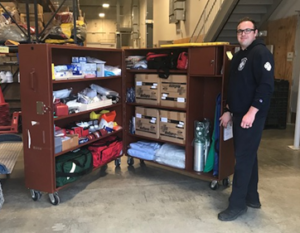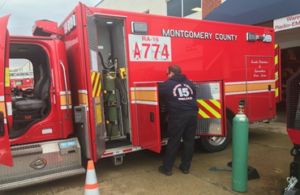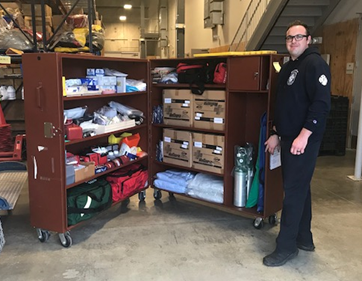Large scale international and domestic events, both accidental and intentional, have resulted in mass casualty incidents (MCI). A mass casualty incident causes sufficient injuries to overwhelm response and healthcare resources. To prepare for these events, the Maryland-National Capital Region Emergency Response System (MDERS) stakeholders endeavored to build MCI response capability and capacity, starting with field response by emergency medical services (EMS).
Leaders from the Montgomery County Fire and Rescue Service (MCFRS) and the Prince George’s County Fire and Emergency Medical Services Department (PGFD) completed an MCI response needs assessment that identified several fire, rescue, and EMS gaps. The purpose of this needs assessment was to determine what resources are required to support a large EMS response in addition to the normal day-to-day incidents of the Maryland-National Capital Region. The assessment revealed that a plan to deploy additional EMS transport units to MCIs did not exist in either fire department.
To address this issue, EMS staff from each fire department, with MDERS assistance, formed a planning group and coordinated a series of meetings to identify a goal, develop objectives, and establish a plan of action. The goal was the safe, efficient, and effective deployment of additional EMS resources to respond to mass casualty incidents. The primary objective was the deployment of additional basic life support transport units to the scene or to backfill depleted resources within 180 minutes of notification of an MCI.
The planning team identified several key steps necessary to accomplish their goal, the first of which was to inventory supplies carried in the basic life support (BLS) transport unit (ambulance). Supplies are divided into two categories: soft supplies (e.g., bandages, other disposable items) and hard supplies (e.g., backboards, splints, other non-disposable items). Employing an inventory schedule is a critical component of sustainment and ensures supplies are utilized prior to expiration. The second step identified the need for a standardized storage methodology that would allow for the easy distribution of these resources to stock reserve ambulances when deployed into the field. The solution was a securable metal storage box on wheels that contained hard and soft supplies needed to respond to an emergency incident. In response to an MCI, the contents of this box could be placed on a reserve ambulance to transition it into a response asset.
The MDERS Steering Committee allocated funds to each agency through a scaled approach. Five kits were provided to each agency in the first phase, followed by an additional five kits in the second phase. This resulted in a total of ten BLS ambulance in a box kits for each agency. In the final phase, five kits in each county were equipped with additional supplies, such as cardiac monitors and advanced respiratory equipment to make them advanced life support (ALS) capable. These units are intended to treat the most severely injured and sick patients, who often require more invasive field treatment.
Although this capability has not yet been utilized for a mass casualty incident response, these boxes have been deployed in Montgomery and Prince George’s County to provide additional transport unit capacity during the most significant surges of the COVID-19 pandemic. They are also frequently deployed in Prince George’s County to provide dedicated ambulances for special events at FedEx Field. Using this equipment on a routine basis allows for providers to refine the process and develop proficiency so that the units are quickly deployed in the event of an MCI.
 A fully stocked EMS in a Box Storage cabinet.
A fully stocked EMS in a Box Storage cabinet.



